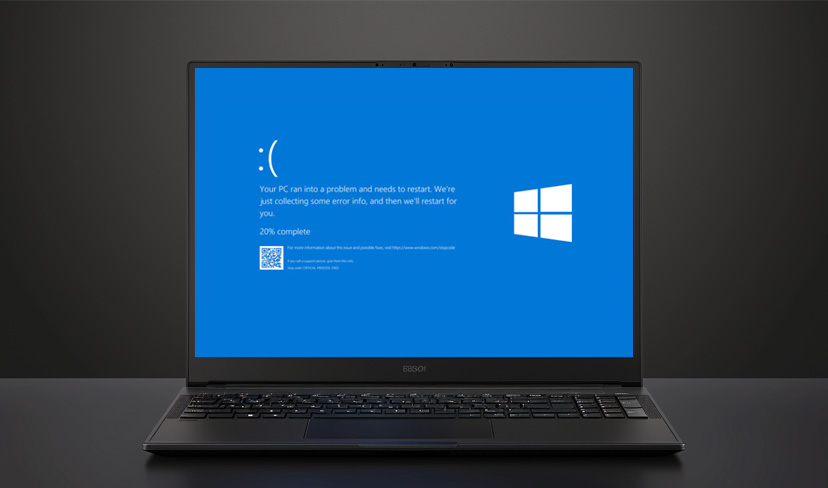Written by KRITIKA SINHA | MARKETING
The recent Microsoft CrowdStrike outage sent shockwaves through the tech industry, highlighting the critical importance of robust cybersecurity measures. As a leading IT services provider, Transputec has closely analysed this incident to extract valuable lessons for our clients and the broader business community. In this blog, we’ll delve into the lessons learned from the Microsoft CrowdStrike outage and provide actionable insights to enhance your organisation’s security posture.
The Microsoft CrowdStrike Outage: An Overview
On July 18, 2024, a software update from CrowdStrike, a prominent cybersecurity firm, caused widespread IT disruptions globally. Instead, the update, intended to enhance security, led to severe incompatibility issues with Microsoft Windows, resulting in system crashes known as the Blue Screen of Death (BSOD). Approximately 8.5 million devices were affected, disrupting critical sectors such as airlines, healthcare, and banking.
CrowdStrike Outage: The Update
At Transputec, we’re committed to helping our clients navigate these challenges, providing robust security solutions, and offering support when issues arise.
Let’s work together to keep your digital assets secure and your operations running smoothly.
Key Lessons Learned from the Microsoft CrowdStrike Outage
1. Importance of Robust Testing and Validation
The Microsoft CrowdStrike outage underscores the necessity of rigorous testing and validation processes before deploying software updates. The faulty update bypassed usual validation checks, leading to widespread system crashes. Organisations must adopt comprehensive testing strategies, including automated and manual checks, to identify potential issues before they reach end users.
2. Preparedness for IT Disruptions
The incident is a stark reminder that IT disruptions can and do happen. Companies must have robust disaster recovery and business continuity plans in place. These plans should outline clear protocols for quickly identifying, isolating, and resolving issues. Regularly testing these plans through simulated drills can help organisations proactively identify and address vulnerabilities.
3. Enhanced Monitoring and Incident Response
Post-deployment monitoring is crucial for detecting anomalies and responding to issues promptly. Organisations should leverage advanced monitoring tools to gain real-time insights into their systems and detect any irregularities immediately. Developing detailed incident response plans, including procedures for quick identification, isolation, and resolution of issues, is essential for minimising the impact of potential disruptions.
4. Redundancy and Resilience
The outage highlights the need for redundancy and failover mechanisms to ensure that critical systems remain operational even if one component fails. Building redundancy into enterprise systems can prevent scenarios where a single failure causes widespread disruption. Organisations should evaluate their cybersecurity strategies and consider implementing additional layers of protection to enhance resilience.
5. Collaboration and Communication
Effective collaboration and communication among stakeholders, including cloud providers, software platforms, security vendors, and customers, are vital during an IT crisis. Microsoft’s response to the CrowdStrike outage involved deploying hundreds of engineers to work directly with customers and collaborating with other cloud providers to share awareness and expedite solutions
Learn How to Protect your Business with Transputec's Expertise
Connect us today for our free consultation!
Implementing Lessons Learned from the Microsoft CrowdStrike Outage
To apply these lessons effectively, consider the following steps:
1. Conduct a thorough security audit of your current infrastructure:
This step involves a comprehensive examination of your organisation’s entire IT ecosystem. It includes assessing network security, endpoint protection, access controls, and data protection measures. The audit should identify vulnerabilities, outdated systems, and potential single points of failure that could lead to issues similar to the Microsoft CrowdStrike outage.
2. Develop a comprehensive incident response plan:
Based on the lessons from the outage, organisations should create or update their incident response plans. This plan should outline clear procedures for detecting, responding to, and recovering from various types of security incidents. It should define roles and responsibilities, communication protocols, and steps for containment and eradication of threats.
3. Invest in employee training and awareness programs:
Human error remains a significant factor in many security incidents. By educating employees about cybersecurity best practices, phishing threats, and the importance of following security protocols, organisations can significantly reduce their risk. This training should be ongoing and updated to reflect new threats and lessons learned from incidents like the Microsoft CrowdStrike outage.
4. Regularly update and patch all systems and applications:
Keeping all software and systems up-to-date is crucial for maintaining a strong security posture. This includes operating systems, applications, security tools, and firmware. Regular patching helps address known vulnerabilities that could be exploited by attackers.
5. Implement multi-factor authentication across your organisation:
Multi-factor authentication (MFA) adds an extra layer of security beyond just passwords. By requiring additional verification (like a code sent to a mobile device), MFA can prevent unauthorised access even if passwords are compromised. Implementing MFA across all systems and applications can significantly enhance an organisation’s security.
Conclusion: Strengthening Your Cybersecurity Posture
The lessons learned from the Microsoft CrowdStrike outage serve as a wake-up call for organisations to reassess and strengthen their cybersecurity strategies. By diversifying security tools, enhancing monitoring practices, and developing robust incident response plans, businesses can better protect themselves against potential threats and minimise the impact of future outages.
Contact Transputec today to speak with our cybersecurity experts and learn how we can help you implement the lessons learned from the Microsoft CrowdStrike outage. Let us guide you in building a resilient and comprehensive security strategy tailored to your organisation’s unique needs.

Secure Your Business!
Contact Transputec today to speak with our experts and discover how we can help strengthen your defences against evolving cyber threats.
FAQs
What caused the Microsoft CrowdStrike outage?
The outage was primarily due to a combination of technical failures and insufficient redundancy measures. Detailed post-mortem analyses pointed to vulnerabilities in both platforms’ infrastructure.
How can I protect my business from similar outages?
Implement a multi-layered security strategy, ensure continuous monitoring, establish clear communication channels with vendors, maintain robust backup systems, and invest in regular cybersecurity training for your team.
What is the role of redundancy in cybersecurity?
Redundancy involves using multiple layers of security tools and providers to ensure that if one system fails, others can compensate, thereby maintaining operational continuity and reducing downtime.
Why is vendor communication important during an outage?
Effective communication ensures that businesses are promptly informed about issues, mitigating confusion and enabling faster, more coordinated responses to outages.
How often should we update and test our backup systems?
Backup systems should be updated and tested regularly—ideally quarterly—to ensure they function correctly and data can be restored quickly in case of an outage.







